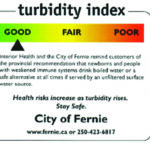Home »

From the best available science
Letter to the Editor
Wildsight believes that information in regard to selenium and other pollutants of water quality in the Elk River must be based on best available science. It is important that the serious nature of the contamination be recognized in designing plans to return the health of the Elk River system. Wildsight is committed to work with Teck, the province, the Ktunaxa Nation and other interested parties to ensure a healthy future for the Elk River.
The following quotes are directly from the water quality report released on March 4 by scientists (Dr. Ric Hauer and Erin Sexton) from the University of Montana. Their work is the result of research by the only independent science group (Flathead Biological Station) that I am presently aware of that is directly engaged in water quality studies in the Flathead and Elk River systems:
“We observed selenium concentrations to be significantly elevated among stream and river sites in the Elk Basin below coal mining such that the concentrations were typically 7-10X above either the naturally occurring levels in Flathead or among the Elk Basin streams and river sites above coal mining. Selenium is of particular concern because of its toxicity to plants and animals and that the concentrations in the sites below the coal mining frequently exceed the values known to cause toxicity and abnormal development in fish. Of extreme concern is the bioaccumulation affects of selenium, in which organisms of the food-web increasingly concentrate the selenium in various tissues, such as muscle, liver or ovaries. This has demonstrable effects, not only among fish and population viability, but also has potential human health implications as people consume the fish.
“All coal mining affected sites had increased nitrogen loading, increased sulcate loading, increased selenium loading, higher algal production as a result of the higher nitrogen loading, and a decrease in benthic macro invertebrate diversity and abundance particularly of species sensitive to pollution.”
John Bergenske,
Wildsight







